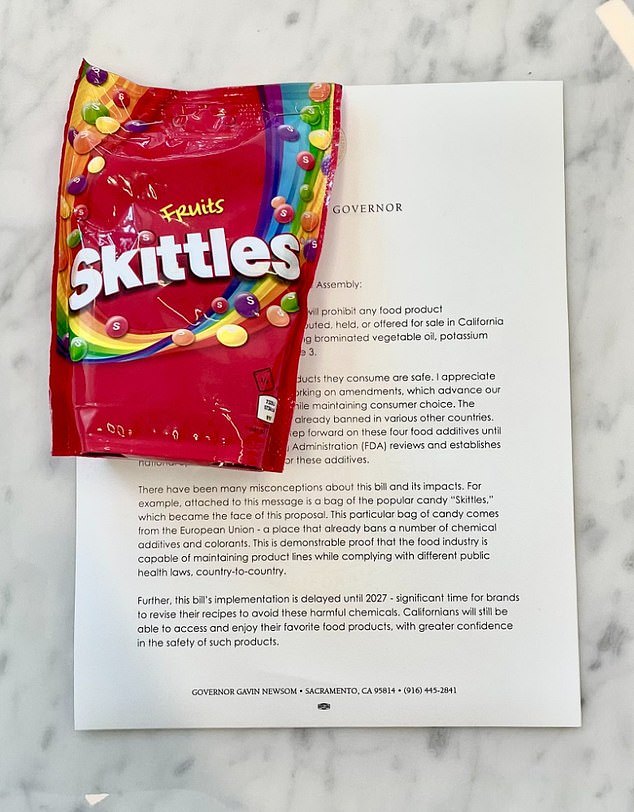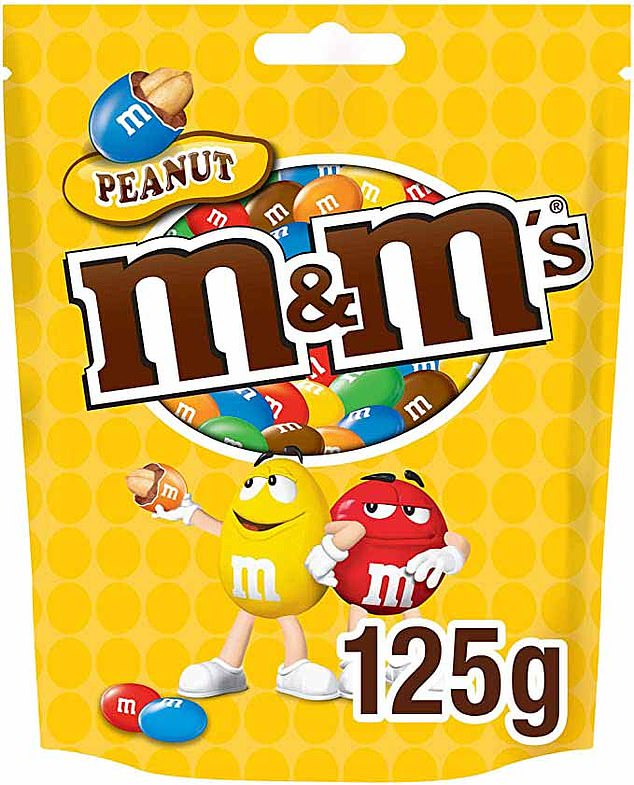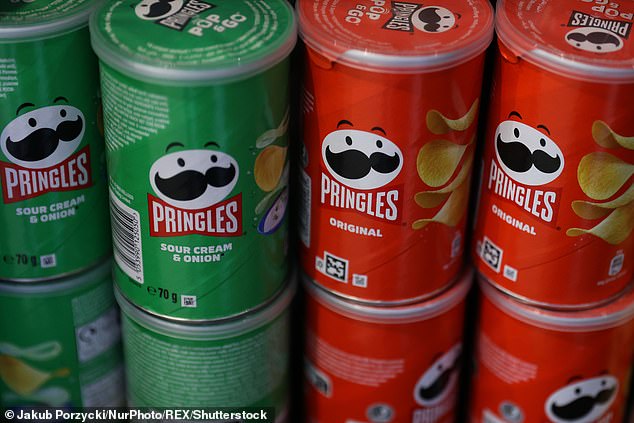Food researchers compare what’s in US and EU versions of popular snacks… and discover remarkable differences
An American walking into a supermarket in Europe might take comfort in seeing familiar snack foods like Pringles, KitKats and Doritos.
According to experts, the contents of the package may vary by region.
In general, portion sizes in the United States are larger, leading Americans to consume more calories, fat, salt and sugar than Europeans.
In addition, states have fewer restrictions on food additives than the European Union, meaning that U.S. snacks tend to contain more flavorings and preservatives, some of which have been linked to cancer.
The toll of obesity also differs greatly between the two continents. In the US, 43 percent of adults are obese, three times higher than in the European Union, according to the most recent data available.
That’s not to say that American snacks are always the losers. Surprisingly, some European snack brands contain more calories and sugar than the American version.
To dig deeper, researchers from Health NewsA Lithuanian public health and science reporting company looked at the ten most popular American snacks and compared them to their European counterparts.
The analysis was reviewed by public health researchers.
Six of the US snack brands contain more calories, sugar and fat than their European counterparts, including KitKats, Skittles, Oreos, Twix, Snickers and Haribo gummies.
The biggest hole was in a sour candy: Skittles.
One medium box of American Skittles contains 250 calories, 45 grams of sugar (11 teaspoons), 10 mg of salt and 2.5 grams of saturated fat.
For comparison, a medium-sized pack of European Skittles contains 179 calories, 33g of sugar, 4mg of salt and 1g of saturated fat. However, this pack is about 15g smaller.
The American version of the snack contains about 50 percent more calories, 33 percent more grams of sugar and more than twice as much salt.
That’s also more sugar than most health authorities recommend per day.
The American Heart Association (AHA) recommends that people eat about 2,000 calories per day. Men should have a maximum of nine teaspoons of added sugar per day and women six teaspoons.
US authorities also recommend that people limit their salt intake to less than 2,300 mg per day, which is about one teaspoon.

California Governor Gavin Newsom sent a letter confirming that he had signed the so-called “Skittles ban,” which will become law in 2024. He attached a bag of European Union Skittles. The law won’t go into effect until 2027.
According to the U.S. Food and Drug Administration (FDA), snacks should only make up about 15 percent of an individual’s daily calories. Dietary Guidelines for AmericansThat equates to 250 to 420 calories, depending on your gender, age, and activity level.
This means that one bag of American Skittles is equivalent to the amount of snacks you need for the entire day.
In addition to the traditional nutrients, Skittles also contain additives such as titanium dioxide. Titanium dioxide is a white powder that is often added to cosmetics, food, and medical products to brighten their color.
It was banned in the European Union in 2021 because some studies showed that when consumed in large amounts or over a long period of time, it can cause DNA damage, which could lead to cancer, the European Food Safety Authority.
California attempted to ban titanium dioxide in October 2023 as part of a controversial move nicknamed the Skittles banThe final version of the law removed some additives, but left titanium dioxide intact.
The rest of the US has not followed suit. According to The Center for Science in the Public Interest.
There’s also more saturated fat in the American diet, Healthnews reported. Diets high in saturated fat — the kind you find in butter and beef — have been linked to heart disease.

One ounce serving of American Peanut M&M’s contains 140 calories, 3 grams of saturated fat, 14 grams of sugar and 15 mg of salt. One ounce serving of European Peanut M&M’s contains 144 calories, 3.1 grams of saturated fat, 14.8 grams of sugar and 11.2 mg of salt.

A 28g serving of American Pringles contains 150 calories, 2.5g saturated fat, 150mg sodium and zero grams of sugar. A 30g serving of European Pringles contains 159 calories, 0.9g saturated fat, 120mg sodium and zero grams of sugar.
However, a handful of American brands packaged their products with fewer calories than European brands. These included Reese’s, Pringles and Peanut M&M’s.
For example, a 42-gram serving of American Reese’s contains 210 calories, 22 grams of sugar, 135 mg of salt and 4.5 grams of saturated fat.
But the same serving of European Reese’s cups contains 219 calories, 23.6 grams of sugar, 136 mg of salt and 4.5 grams of saturated fat.
One product was the great equalizer: Doritos.
Although the U.S. government recommends a smaller serving size for Doritos and nearly 50 percent more salt is used in the product, the calories of the European and American nacho chips are the same.
However, the U.S. version contains 210 mg of salt, compared to 144 mg of salt in the European version. Eating too much salt can raise your blood pressure, which can contribute to a number of health problems, including heart disease and stroke, according to the AHA.
Wherever you are in the world, eating these types of snacks is not the best way to get your daily nutrition.
Snack brands often contain little gut-friendly fiber and can cause you to unknowingly consume too many calories, which can lead to obesity and a host of related health problems.
